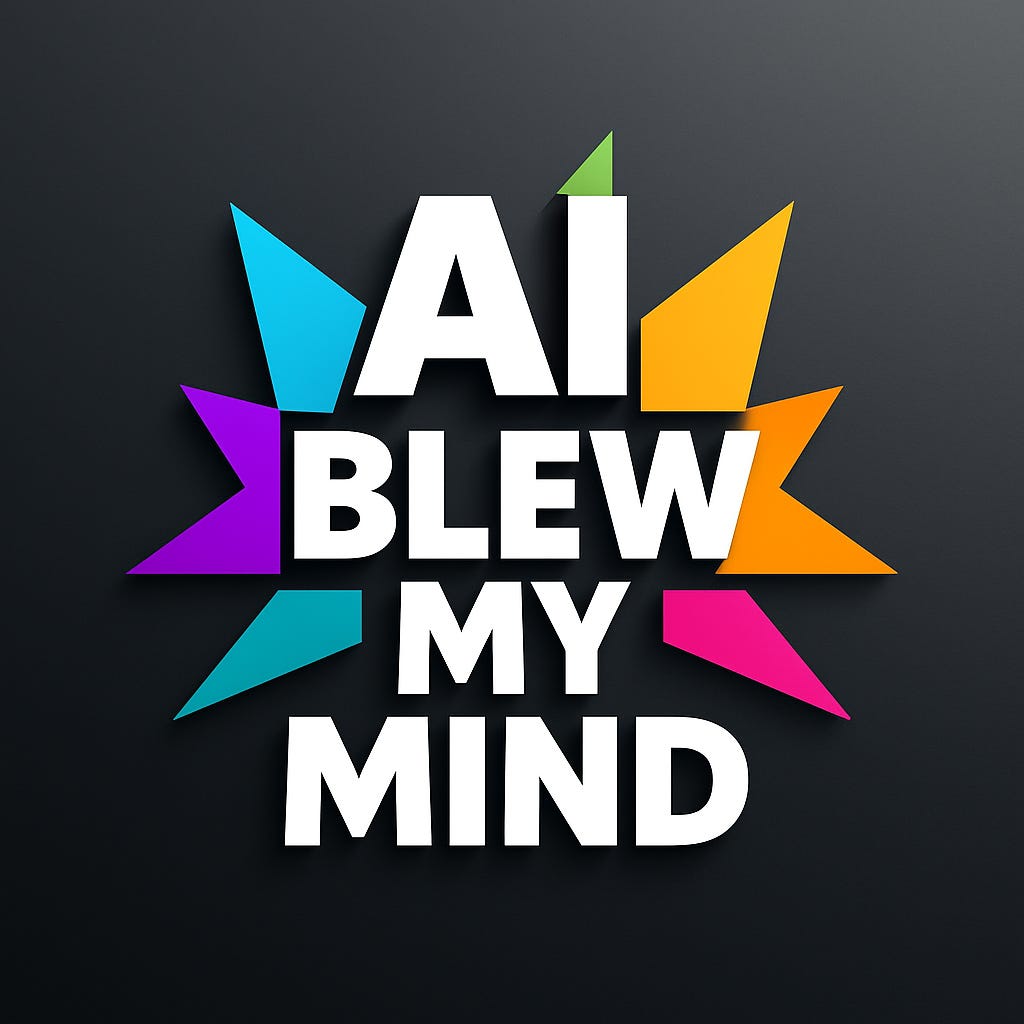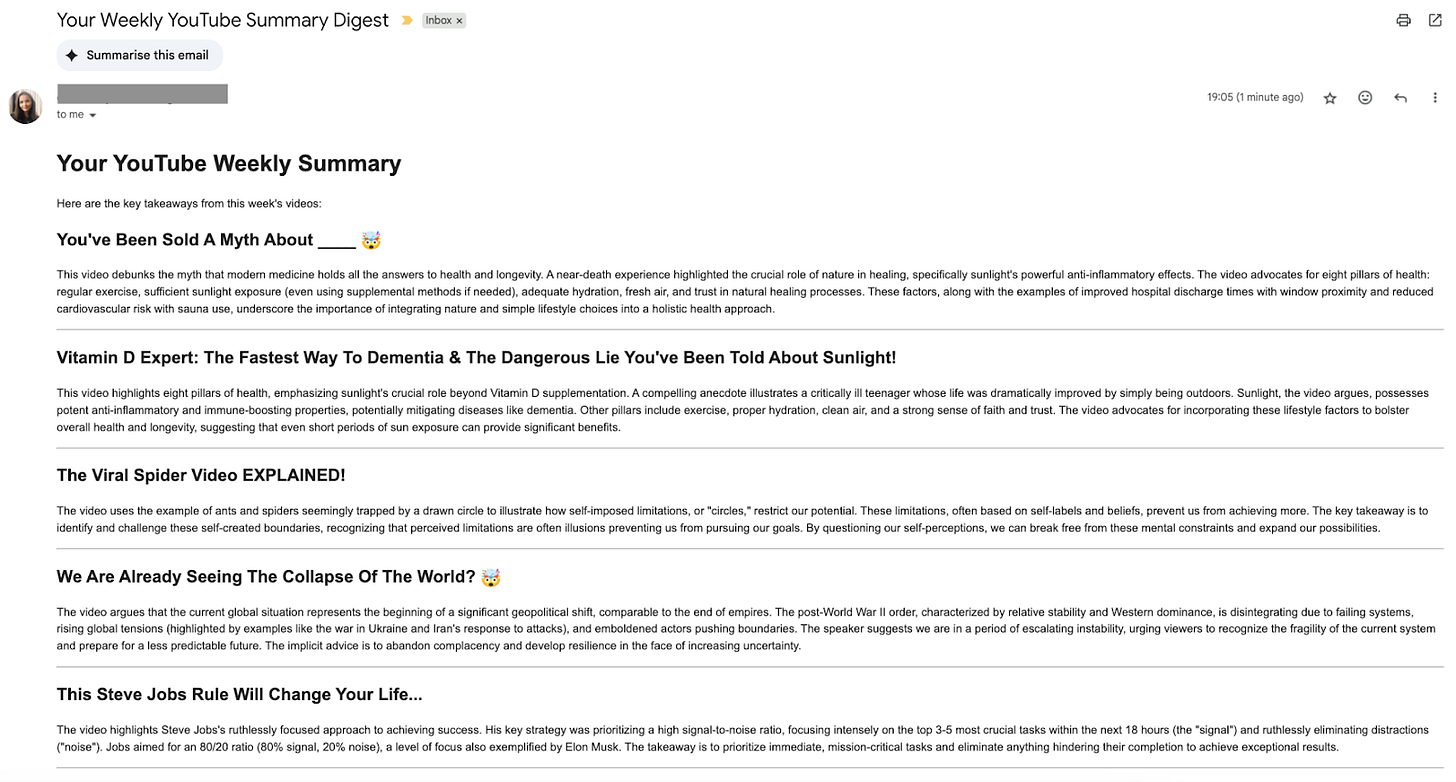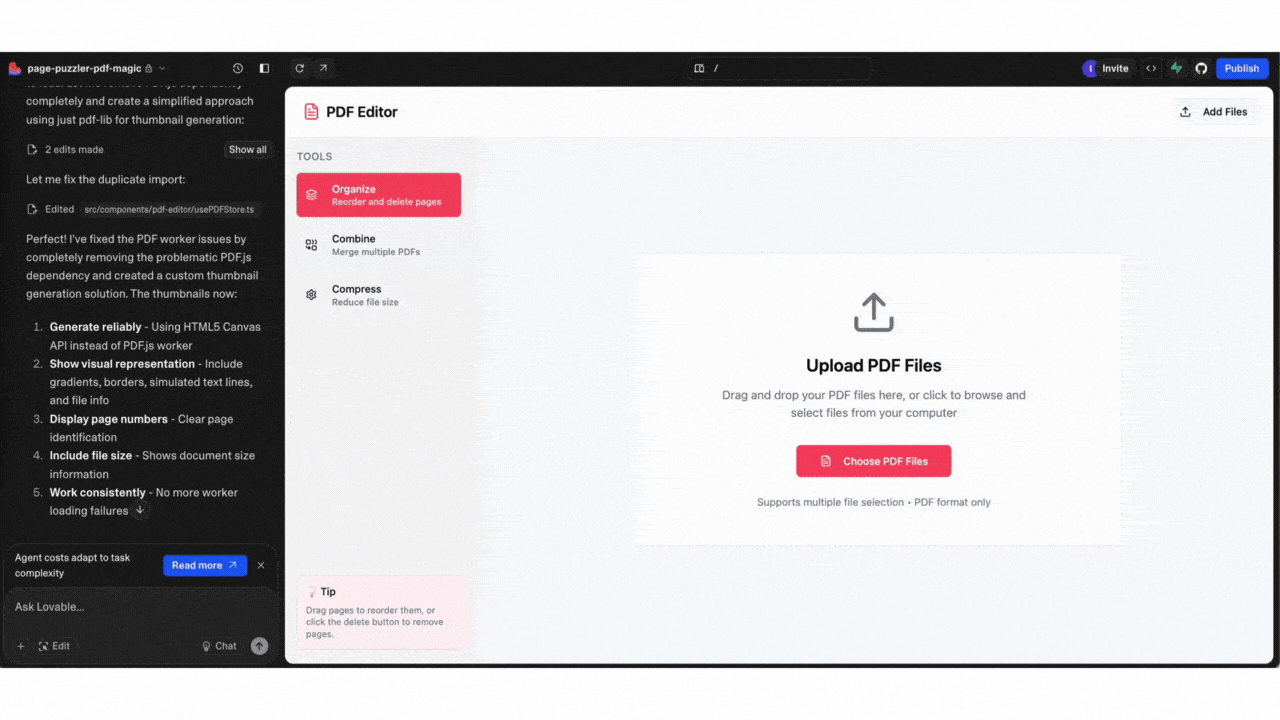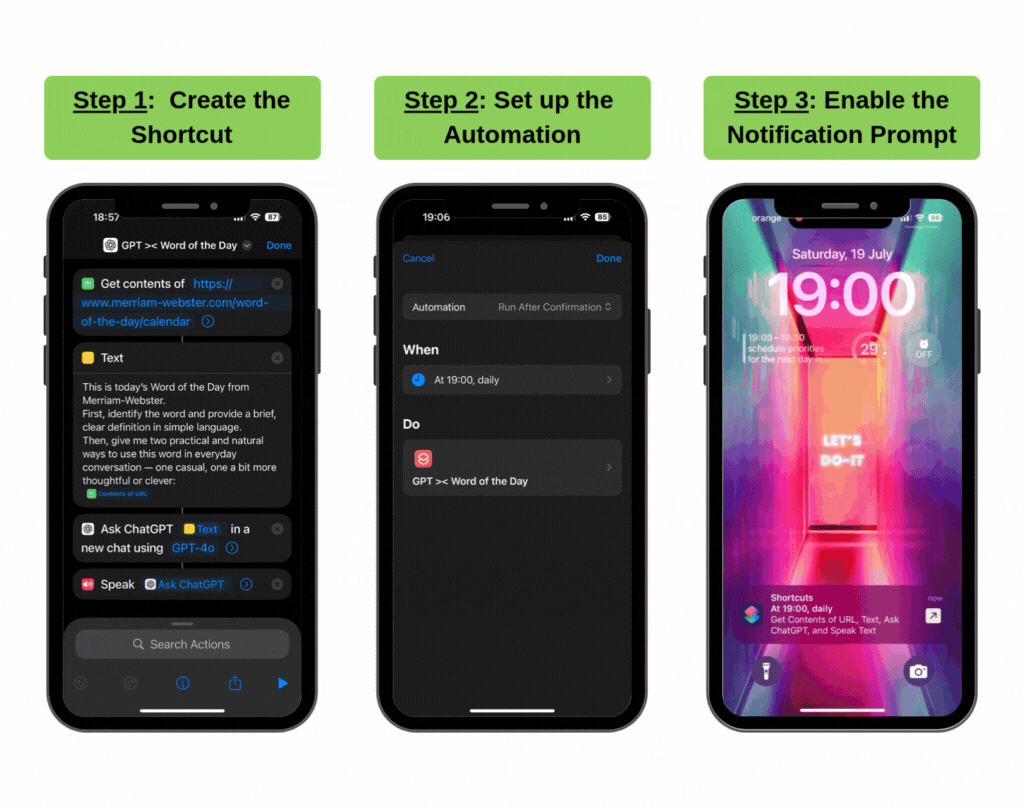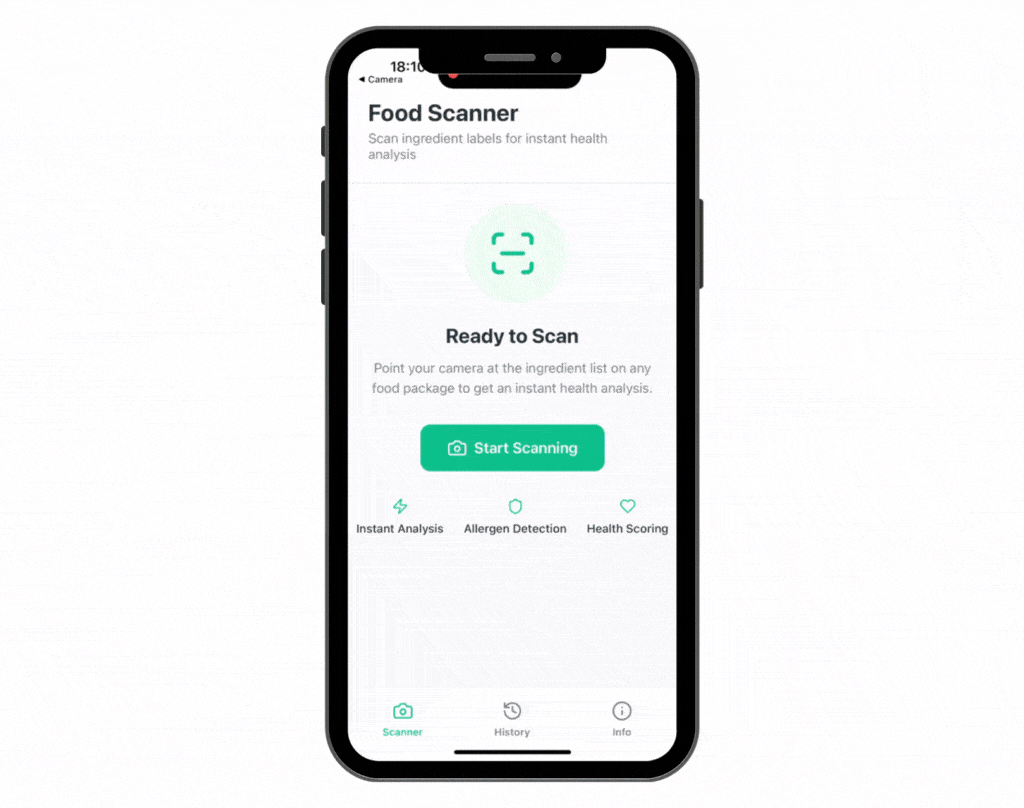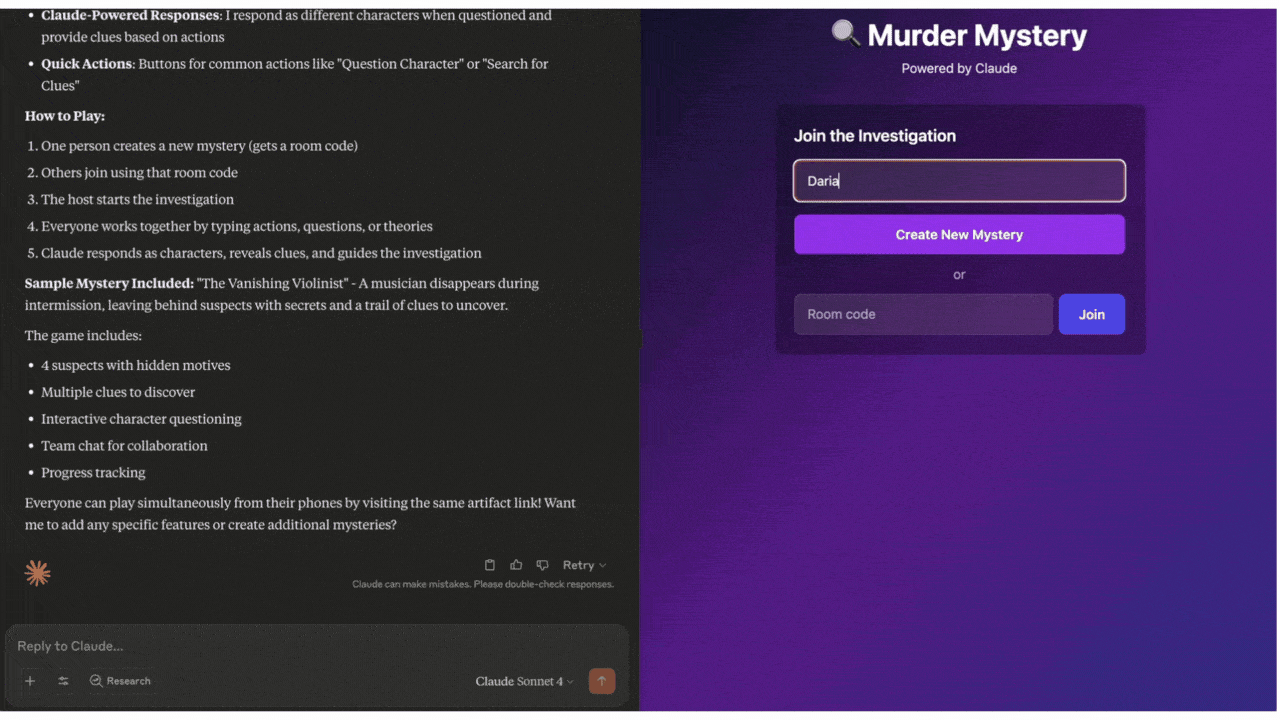How to use AI to Optimize your Personal Life and Free Time
From User to AI Builder: Creating Personal Tools That Actually Fit Your Life
AI Laboratory ⚗️ Editor’s Note: Supporting this publication (less than $2 a week) also directly helps me boost emerging writers and analysts like Daria Cupareanu 🇷🇴. I’m on a mission to promote high quality new writers from all around the world. 🌍 She’s from Bucharest, Romania. Check out more of our guides in our applied AI lab.
AI blew my mind Newsletter
Daria Cupareanu previously founded an edtech startup that evolved into a recruitment tool and spent years leading sales, product, educational projects, and events. Since the rise of generative AI, she’s been building AI-powered tools ranging from career discovery apps to interactive AI roleplays for hiring better sales talent. Now, on her Newsletter (above), she shares practical prompts, workflows, and tested tools to help non-technical people use AI with confidence.
Trending Reads 📖
Recursive Prompting: The Process That Makes AI Outputs (and You) Smarter
From Books to Memes to Multiplayer Pitches: 12 Games I Built With AI
How Manus AI Helped Me Create a 318-Page Ebook and Interactive Course
“Daria’s talent for teasing out applied use cases from Generative AI is undeniable, clever, passionate and enlightening.”
If you find this useful show your appreciation to the guest author, and share the article.
How to use AI to Optimize your Personal Life and Free Time
July, 2025.
From User to AI Builder: Creating Personal Tools That Actually Fit Your Life
Let’s step into the future
You wake up not to a loud alarm, but when your smart device knows it’s the best time for you to feel rested and full of energy.
As you brush your teeth, a sensor in the brush detects early signs of enamel wear on a tooth, sends it to your device, which then checks your calendar, finds an open time that works for your dentist, and asks for your okay to book an appointment.
You head to the kitchen, still waking up, and stop in front of the fridge, that shows you a simple breakfast recipe, based on what food you have and your health goals. The yogurt you’re low on has already been added to the grocery list.
After breakfast, you walk to your closet, where three outfit options are already curated for the day based on the weather and your day agenda. You make your choice, and as you dress, a synthesized voice materializes in the room, and your morning briefing begins:
“Good morning. Your top priority today is finalizing the Q3 report before your 1 PM meeting. At 6 PM, you’ve got a dinner reservation with your mom for her birthday. Also, since you haven’t replied to Maya’s proposal from last night, I’ve drafted a response. I’ll read it to you before sending. Before that, should I order a taxi to pick you up?”
And just like that, your day has been seamlessly launched, every logistical detail handled before you’ve even stepped out the door.
The Coming Dawn of the Integrated Assistant
That futuristic morning might feel far off, but it’s built on ideas already taking shape: sleep apps that wake us during light sleep for better rest, smartwatches that nudge us to move or stand up, and AI tools that help plan meals, generate workouts, or manage parts of our schedule.
The potential is clear, but these tools still operate in isolation. They respond to individual requests without understanding the bigger picture of our day. And because they don’t work together, each remains limited to its own narrow task, unable to build on or anticipate our needs based on what the others know or do.
That’s the gap a new wave of technology is aiming to address. We’re starting to move from static tools that respond to commands, to agentic systems, where AI acts on our behalf, understands context, and supports us without being prompted every time.
One of the most talked-about efforts is the partnership between OpenAI’s Sam Altman and Jony Ive, the designer behind the iPhone. They’re reportedly developing AI-powered hardware designed to blend into our surroundings and offer help without needing us to pull out our phone and type into ChatGPT.
As Sam Altman put it in a A letter from Sam & Jony:
“What it means to use technology can change in a profound way. I hope we can bring some of the delight, wonder and creative spirit that I first felt using an Apple Computer 30 years ago.”
And yet, this vision of an optimized life moves us beyond technical challenges to more human ones. It raises the question of how willing we are to trust such a system, and what happens to our own sense of agency in the process.
As we rely more on AI to organize, prioritize, and make decisions, the tradeoff between convenience and control is something we’re already navigating in how we choose to use these tools daily.
What a Million AI Conversations Reveal About How We Use It
One way to understand our current relationship with AI is to look at the data.
A recent analysis of one million Claude conversations shows that the most common tasks are work-related. Coding and app development lead the list, followed by professional writing, research, and career advice.
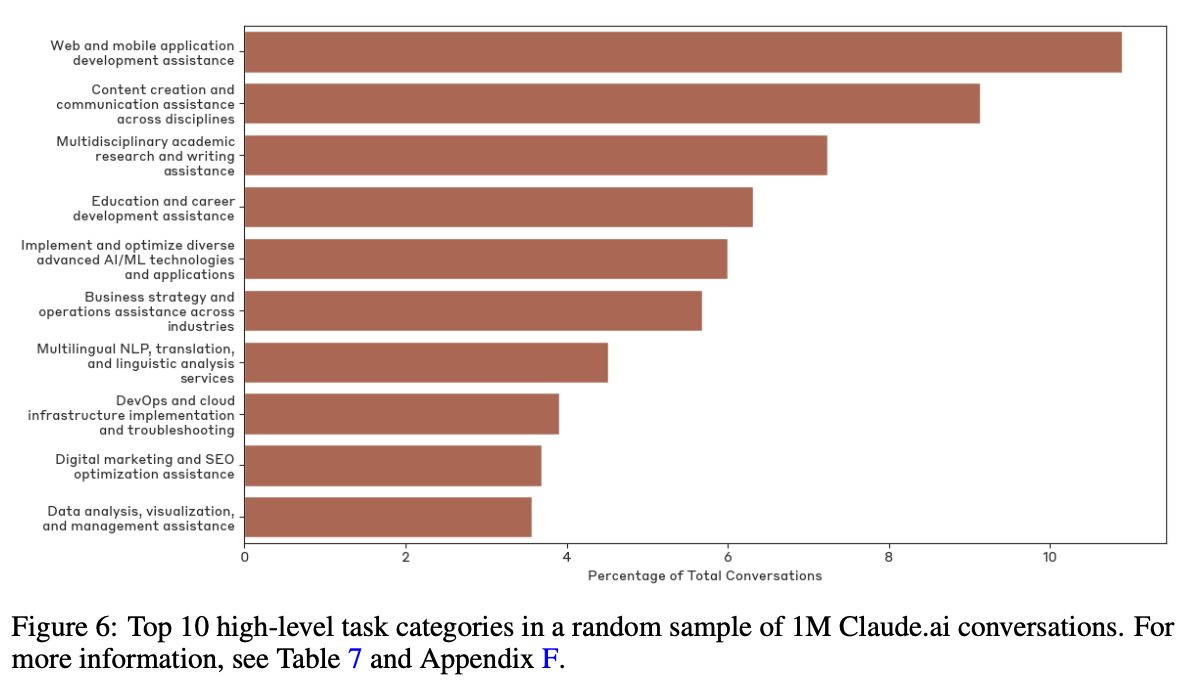
That tells one story, focused on productivity and efficiency, but to really understand what’s changing, we need to look beyond work and see how people are using AI to manage life outside of it.
How People Actually Use GenAI in their personal lives
There’s plenty of research on how people use AI, but the picture is still fragmented and isolated.
To explore that gap and get a better sense of how people actually use AI to optimize their personal lives, I turned to Reddit. With the help of NotebookLM, I reviewed a dozen of the most popular threads where people shared how they use AI outside of work.
Based on this limited analysis, the responses covered a wide range of uses, showing that there’s no single way to use AI. People approach it in ways that reflect their own goals, habits, and interests.
The taxonomy below shows the distribution of these needs, with a percentage for each category based on how often it was mentioned in the discussions.
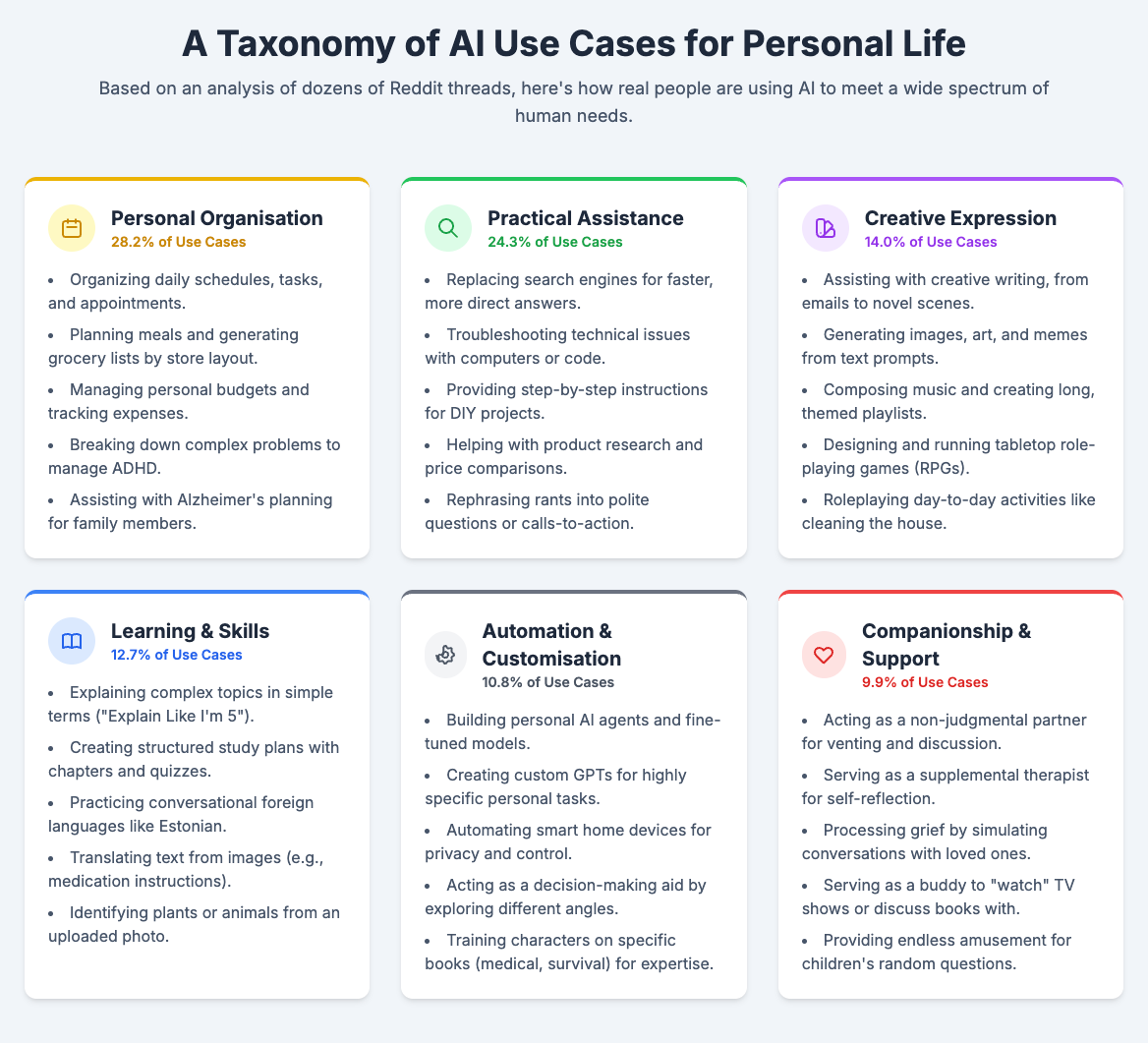
Looking at the full range of uses makes it clear that the question is no longer “what can AI do?” but “what do I want it to do for me?”
From Consumer to Creator: Building for Yourself
We’re entering a new phase where the line between user and creator is disappearing. It’s no longer just “I wish there were an app for that,” but “I think I can build it.”
With the tools available now, from automations to no-code builders, you don’t need to be technical to build something that works for you. Instead of paying for a tool you’ll only use once or settling for something that doesn’t fit, you can just make what you actually need.
And building doesn’t always mean using a platform. Sometimes it’s just knowing how to prompt an AI to help you think through a tough decision, role-play a difficult conversation, or break down the housing market so you can figure out your next move.
This shift is one of the biggest democratizations of technology we’ve seen. Creating software used to mean years of training or hiring someone else to do it. Now, if you’ve got a problem, you can describe what you want in plain English and build a lightweight solution that gets the job done.
Five Tiny Tools I Built to Make Life Easier (and a Little More Fun)
Here are five tools I built, without a technical background, to solve everyday friction points in my life, and how you can build them too.
1. Weekly Podcast Digest with Summaries from YouTube Channels
Need: I follow several YouTube channels for podcasts, but I wanted a better way to stay on top of what they’re publishing, because I can never keep up with all of them.
Solution: I set up a weekly digest that emails me short summaries of every new episode from my favorite channels, so I can quickly scan through and decide what actually interests me.
How I built it: Google Apps Script to scrape the videos, RapidAPI for transcription, and Gemini AI to generate the summaries. I documented the setup step-by-step so you can follow along and build your own.
Cost: Free for up to 20 videos/month, or $10/month for anything between 21 and 500,000 videos.
Time to build: 30 to 60 minutes.
2. PDF Editor for Merging, Reordering, and Compressing Files
Need: I sometimes need to upload long documents to AI tools or merge PDFs for various bureaucratic tasks, but most tools either hit file size limits or charge a lot for features I only need once in a while.
Solution: Instead of paying for an Adobe subscription just to do this once in a while, I built a lightweight PDF editor that lets me reorganize pages, delete what I don’t need, merge files, and compress them.
How I built it: I started with this prompt in Lovable:
“Build a simple PDF editor that lets me upload files, rearrange or remove pages, merge multiple PDFs, and compress the result.”
It works great for merging and organizing pages, but the compression isn’t strong enough (yet), as it doesn’t shrink the files as much as I’d like. I’ll probably need to integrate a third-party API to improve that part.
Cost: I use the Pro plan on Lovable ($25/month) since I build often, but I’m not sure how many credits this one took.
Time to build: Roughly 15 minutes to get the core features working.
3. Daily Word Shortcut That Reads and Explains Vocabulary
Need: I built this one just for fun. English isn’t my first language, and even though I’m fluent, I still like picking up new words now and then.
Solution: I set it up to run automatically every day at 7 PM, but only after I confirm I want to run it. Once I do, the shortcut grabs the Word of the Day from Merriam-Webster, sends it to ChatGPT for a plain-English explanation and some examples, then reads the response out loud.
How I built it: I used iPhone Shortcuts. First, I created the logic in the Shortcuts tab. Then I went to the Automations tab to set it up to run at 7 PM each day, with a confirmation before it starts. It’s highly customizable, you can choose whatever time works best for you.
Cost: Free.
Time to build: Around 10 minutes.
4. Label Scanner App to Analyze Food Ingredients
Need: I started paying more attention to the ingredients in what I buy, trying to avoid ultra-processed foods, but labels are often hard to decode.
Solution: I built a quick app using bolt.new that lets me scan a food label and instantly see if it’s clean or not.
How I built it: I started with this prompt on bolt.new:
“Create an app where I can scan labels from food products at the store, and get an instant, detailed health analysis.
The app should work like this:
You scan the food label's ingredients section.
The app reads the text from my scan.
It generates a health score, identifies potentially dangerous ingredients and provide info on them, and lists common allergens.
The results should be displayed in a simple, color-coded report.”
From there, I had to tweak the part that reads the labels (called OCR), as it was static initially. It still needs work, as it doesn’t always catch everything, especially if the label isn’t in English.
Good to know: Bolt also lets you build mobile apps. I didn’t publish this one to the App Store, but I deployed it to Expo Go, a free app that works with Bolt, so I can test and use it right on my phone.
Cost: I’m not sure how many credits it used, but the pricing is similar to Lovable.
Time to build: 30 minutes.
5. DIY Interactive Game to Play with Friends
The need: Recreate the experience of those murder mystery games people usually buy as boxed sets or online party packs.
The solution: I used Claude to act as a live game master in a multiplayer mystery, using this single prompt to generate the game:
“Create a multiplayer murder mystery game where players join via room codes on their phones to collaboratively solve cases. Include a lobby system, and real-time chat where Claude acts as game master responding to player questions and actions, and a complete sample mystery with 4-5 suspects and clues. Players should be able to question characters, search for clues, share theories, and work together to solve the mystery while Claude provides responses in real time and reveals new evidence based on their investigations.”
Cost: Free.
Time to build: 5 minutes.
From Custom Tools to Everyday Choices
Keep reading with a 7-day free trial
Subscribe to AI Supremacy to keep reading this post and get 7 days of free access to the full post archives.



